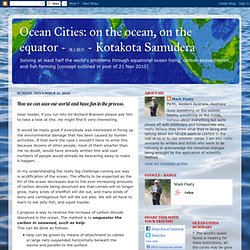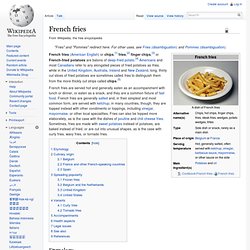

Lenfest Ocean Program. Ocean acidification: Connecting science, ... Marine. Pacific and Indian Oceans. Projects. Welcome to our site! Earth, Ocean, & Environmental Science. Google Maps.
How we can save our world and have fun in the process. Dear reader, if you run into Sir Richard Branson please ask him to take a look at this.

He might find it very interesting. It would be really good if everybody was interested in fixing up the environmental damage that has been caused by human activities. If that were the case I wouldn't have to write this because dozens of other people, most of them smarter than me no doubt, would have already written this and vast numbers of people would already be beavering away to make it happen. In my understanding the really big challenge coming our way is acidification of the ocean. The effects to be expected as the PH of the ocean decreases due to the ever increasing amounts of carbon dioxide being dissolved are that corrals will no longer grow, many kinds of shellfish will die out, and many kinds of bony and cartilaginous fish will die out also.
I propose a way to reverse the increase of carbon dioxide dissolved in the ocean. Hake fillet. This article is about the fish product "Hake fillet", for a general description of the fish and other uses see Hake After the production stage, the hake fillet is checked for blood, bones, fins, black membrane, fleas, loose fish scales, and sorted.

It is then packed and kept frozen in order to achieve a product temperature of approximately -18°C.[2] Imports and exports of Hake fillet[edit] Frozen hake fillet is the main product that is exported from Argentina. But due to the hectic situation that Argentinean companies are going through, export of hake fillet has been dropped by 3% and 22% in terms of volume and value respectively. Flake (fish) Flake is a term used in Australia to indicate the flesh of any of several species of small shark, particularly the gummy shark.

The term probably arose in the late 1920s when the large-scale commercial shark fishery, started by Faith Isbell, off the coast of Victoria was established. Until that time, shark was generally an incidental catch rather than a targeted species. Flake rapidly became popular. It has a mild flavour, a soft texture that nevertheless remains well-defined after cooking, and a clean white appearance. These qualities, combined with the ready supply and a low price, saw flake become by far the most common type of fish to be served in Australian fish and chip shops.
Although the primary shark species sold as flake is the gummy shark, several others are listed below. In Britain, nursehound is often sold as flake. Food Standards Australia article on Flake[dead link] French fries. French fries (American English) or chips,[1] fries,[2] finger chips,[3] or French-fried potatoes are batons of deep-fried potato.[4] Americans and most Canadians refer to any elongated pieces of fried potatoes as fries, while in the United Kingdom, Australia, Ireland and New Zealand, long, thinly cut slices of fried potatoes are sometimes called fries to distinguish them from the more thickly cut strips called chips.[5] French fries are served hot and generally eaten as an accompaniment with lunch or dinner, or eaten as a snack, and they are a common fixture of fast food.

French fries are generally salted and, in their simplest and most common form, are served with ketchup; in many countries, though, they are topped instead with other condiments or toppings, including vinegar, mayonnaise, or other local specialities. Fries can also be topped more elaborately, as is the case with the dishes of poutine and chili cheese fries. Etymology Oven-baked fries Culinary origin Belgium Spain.
Fish and chips. History[edit] Fish and chips became a stock meal among the working classes in the United Kingdom as a consequence of the rapid development of trawl fishing in the North Sea, and the development of railways which connected the ports to major industrial cities during the second half of the 19th century, which meant that fresh fish could be rapidly transported to the heavily populated areas.[2] Deep-fried fish was first introduced into Britain during the 16th century by Jewish refugees from Portugal and Spain,[3][4] and is derived from pescado frito.

In 1860, the first fish and chip shop was opened in London by Joseph Malin.[5] Deep-fried chips (slices or pieces of potato) as a dish may have first appeared in Britain in about the same period: the Oxford English Dictionary notes as its earliest usage of "chips" in this sense the mention in Dickens' A Tale of Two Cities (published in 1859): "Husky chips of potatoes, fried with some reluctant drops of oil". England[edit] Scotland[edit]
Ocean Cities - 海上城市 - KotaKota Samudera.